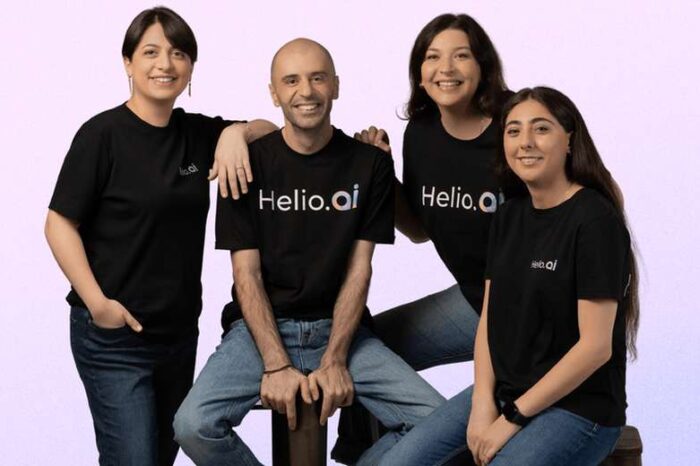Top AI & Robotics News Today

Hello TechStartups readers and founders alike,
Today, we’re kicking off a new series at TechStartups: a daily “Top AI & Robotics News Today” briefing that tracks intelligence moving from the screen into the physical world.
The age of speculation is over. We are now living at the intersection of artificial intelligence and robotics, where software intelligence is merging with physical machines to reshape the world in real time. Artificial intelligence and robotics are no longer distant concepts. They are actively reshaping the global economy, automating critical decisions, and raising ethical questions that will define the future of work, privacy, and power. The pace of change is so fast that what was groundbreaking yesterday is already foundational today.
To remain competitive, make informed decisions, and truly understand the forces transforming industries and everyday life, you can no longer afford to be a passive observer. This series is built to keep you ahead of that curve.
Here’s your first edition of Top AI & Robotics News Today.
Top AI News Today
1. OpenAI warns as Google closes ground
In a leaked internal memo, Sam Altman acknowledged that OpenAI is facing mounting pressure as Google’s AI capabilities accelerate. The memo signaled unease about “temporary economic headwinds” and a tougher competitive environment. Google’s rapid progress, deep integration into search and productivity products, and massive distribution advantage have turned the model race into a platform war.
This matters not only for product leadership but also for partnerships, enterprise contracts, and access to compute. If Google successfully bundles superior models into its existing ecosystem, OpenAI may have to compete harder on distribution rather than just model quality. For developers and startups, it also raises questions: which AI platform will dominate in five years, and where should they place long-term bets?
Why it matters: This is one of the first times OpenAI has publicly shown vulnerability. The AI leadership race is tightening, and dominance is no longer guaranteed.
2. U.S. Congress introduces the “AI for America Act” to strengthen national AI leadership
Representative Jen Kiggans introduced the “AI for America Act,” a sweeping proposal aimed at modernizing America’s federal research infrastructure and removing outdated regulations that slow AI development and adoption. The bill is designed to boost U.S. competitiveness in AI by accelerating access to compute resources, funding next-generation research programs, and reducing regulatory friction that has traditionally delayed innovation across government-linked institutions.
Unlike broad, reactionary tech laws of the past, this bill signals a more strategic federal posture: one that sees AI not as a threat to be restricted, but as a national asset to be scaled responsibly. It also reflects the growing sense in Washington that AI leadership will shape economic security, defense capability, and geopolitical strength in the coming decades.
If passed, the legislation could reshape grant structures, university partnerships, and startup access to federal initiatives. For founders and researchers, this may unlock new funding channels and institutional adoption pathways.
Why it matters: AI has officially moved to the center of U.S. strategic policy. Regulation is no longer just a risk — it is becoming a growth catalyst.
3. Anthropic projects $70B revenue by 2028
Anthropic is reportedly targeting up to $70 billion in annual revenue and $17 billion in cash flow by 2028. The company’s Claude models have been gaining traction in enterprise use cases like coding, safety-focused deployments, and research environments. These projections suggest not just growth, but global-scale infrastructure ambition similar to top cloud providers.
The numbers also reframe expectations around AI economics. What was once an experimental research lab sector is now shaping into a new industrial layer of software, similar in scale to cloud computing or semiconductors. If Anthropic hits even part of its goal, it could become one of the world’s most valuable software and infrastructure companies in record time. Meanwhile, investors are funding a new wave of AI labs, including Neolabs and Humans&, in the search for contenders capable of competing with OpenAI and Anthropic.
Why it matters: These projections show that AI is no longer a niche market — it’s becoming a trillion-dollar economic layer.
4. Agent-driven AI becomes the new investment focus
A new wave of startups is moving beyond simple chatbots into agentic systems — AI that plans, executes tasks, and operates with a degree of autonomy. Instead of just responding to prompts, these systems complete workflows, make decisions, and handle multi-step objectives. This shift is attracting serious investment as businesses look for AI that actually replaces work, not just assists it.
The model is changing from “AI as a helper” to “AI as an operator.” That transition has massive implications for productivity, workforce dynamics, and the structure of digital businesses. Investors are beginning to prioritize companies that reduce friction in real-world processes rather than those simply offering better text generation.
Why it matters: The next generation of AI winners will not be better chatbots, but autonomous digital workers.
5. Enterprise AI funding stays strong despite economic headwinds
Even in a cautious macro environment, billions of dollars are still flowing into AI startups each month. Enterprise AI companies solving real business problems are continuing to attract capital, especially in areas tied to efficiency, compliance, finance, and automation.
This signals that AI is no longer considered a risky experimental area. Instead, it is treated as core business infrastructure. However, the profile of companies receiving funding has changed. Investors now demand revenue models, proof of adoption, and long-term defensibility. The days of easy money for unproven AI concepts appear to be over.
Why it matters: AI funding hasn’t slowed — it has matured. Capital is now chasing real impact, not hype.
6. Reinforcement learning environments become critical infrastructure
Behind every powerful AI system are the environments it trains in. Reinforcement-learning (RL) simulations allow AI to learn through repeated action, feedback, and improvement across complex environments. These environments are now becoming a key competitive advantage for companies building autonomous agents, robots, and complex decision systems. A growing number of venture firms are now investing heavily in simulation “environments” to train AI agents.
As AI moves from text to action, simulated environments will determine how well models can learn real-world behaviors without costly physical testing. This signals a new hidden layer of power: whoever owns the best simulated worlds may create the best real-world intelligence.
Why it matters: The future of AI performance may depend less on data size and more on training environments.
7. $61M raised by enterprise AI firm “Giga” to scale real-time support agents
Enterprise AI startup Giga announced a $61 million funding round, led by Redpoint Ventures, to expand its emotionally-intelligent, real-time support agents designed for complex corporate environments. Unlike traditional AI chat systems, Giga’s agents operate with layered reasoning, secure infrastructure, and context-aware communication designed to handle sensitive or multi-step enterprise use cases.
The round reflects a growing investor appetite for specialized, verticalized AI platforms that solve very specific operational problems rather than competing head-to-head with large general-purpose models. Giga is focused on high-value enterprise functions where response speed, nuance, and data security are critical — including finance, healthcare, and multinational support environments.
What stands out is not only the funding size, but also the category choice. Support systems have historically been labor-intensive and expensive. Automating that function with intelligent agents creates massive cost leverage.
Why it matters: The flow of capital into vertical AI applications shows that the biggest opportunities aren’t only at the model level, but deep inside enterprise operations.
8. Debt markets react as AI capital flows accelerate
Major investors, including DoubleLine Capital, have begun flagging that the ongoing surge in AI funding could begin to affect the dynamics of the U.S. high-grade debt market. This connection may be overlooked by many in tech, but it is a powerful signal. When debt markets start responding to equity trends in a specific sector, it means the sector is large enough to influence the broader financial ecosystem.
AI is drawing enormous pools of private and institutional capital. That redistribution can impact interest rates, risk appetite, and corporate bond demand, especially if companies begin to increase leverage to fund AI infrastructure, data centers, or talent acquisition.
This is an early macro-signal that AI is no longer “just tech news.” It is affecting the mechanics of global capital flow.
Why it matters: When AI shakes debt markets, it has officially crossed into true systemic economic influence.
AI News Summary
Funding & Deal Flow (AI Edition)
-
Investor interest in agent-based AI startups is accelerating rapidly
-
New labs like Neolabs and Humans& are positioning as next-generation challengers
-
Capital is shifting toward companies aiming to replace workflows, not just assist them
-
This marks a fundamental shift from “AI tools” to “AI operators.”
Research, Models & Infrastructure
-
The race for model superiority is intensifying between Google, OpenAI, and Anthropic
-
The next frontier is not just smarter models, but autonomous agents capable of independent execution
-
Infrastructure and compute capacity will determine who scales fastest
-
Control of compute = control of the future.
Top Robotics News Today
9. Apptronik hits $5B valuation as humanoid funding surges
Apptronik’s latest funding round pushed its valuation to approximately $5 billion, highlighting renewed investor confidence in humanoid robotics. Once seen as too complex and expensive, humanoid systems are now viewed as essential to solving labor shortages and automating physical workflows. The company’s focus on real-world deployment has helped differentiate it from robotics projects that remain stuck in labs.
This level of valuation suggests robotics is moving into the same investment tier as top AI companies. It also signals belief in mass deployment — in warehouses, factories, hospitals, and eventually homes.
Why it matters: Humanoid robotics is no longer a side bet. It is now a multi-billion-dollar industry.
10. Xpeng publicly proves its humanoid robot isn’t human-operated
In a dramatic public demonstration, Xpeng cut open its humanoid robot on stage to prove it wasn’t a person in a costume. While theatrical, the message was clear: robotics is becoming realistic enough to blur the line between machine and human.
This shows how advanced physical AI has become, especially in China, where robotics is a national priority. Companies are now competing on realism, transparency, and deployment readiness. The demonstration also highlights how public trust is becoming a factor in robotics adoption.
Why it matters: Robotics is becoming so advanced that companies must now prove authenticity to the public.
11. Robotics software startup Flexion raises $50M to drive autonomy
Robotics software startup Flexion has raised $50 million to build the intelligence layer controlling humanoid machines. This highlights the shift away from a hardware-only focus. Today, the real value is in software, perception, planning, and decision-making engines that sit inside the robot.
This mirrors earlier waves of technology, where hardware became commoditized while software determined control and scale. The firms building the “robot brain” may become more valuable than those building the metal body.
Why it matters: In robotics, software is becoming more valuable than hardware.
12. Multi-billion-dollar investments flood into physical AI companies
Robot-focused startups are raising massive rounds to build machines for logistics, agriculture, healthcare, and defense. These companies are blending sensors, AI, mobility, and autonomy to operate in unpredictable real-world environments. This marks a shift away from industrial robots locked in cages toward flexible, intelligent machines.
The scale of funding suggests that investors believe physical AI will transform industries in the same way the internet transformed communications.
Why it matters: Physical AI is becoming the next foundational infrastructure layer.
13. Construction robotics startup emerges targeting real-world labor gaps
A new robotics startup targeting the construction sector raised early funding to automate physically demanding and dangerous tasks. Construction, one of the world’s largest and least automated industries, presents a massive opportunity for robotics.
By entering high-risk, labor-intensive sectors, robotics startups are no longer chasing novelty — they are targeting necessity. As labor shortages grow, these machines may become essential for maintaining infrastructure and development.
Why it matters: Robotics is moving into the world’s most basic and essential industries.
Signals to Watch
-
AI power is shifting from text to action
-
Robotics is moving from demo to deployment
-
The battle is no longer just models, but full ecosystems
-
Humanoid machines will soon enter everyday environments
-
Hardware + AI + autonomy = a new industrial revolution
Closing
That’s your Top AI & Robotics News Today briefing — covering everything from model breakthroughs and robotic deployments to infrastructure buildouts, ethical battles, and the accelerating race between open and closed systems.
Artificial intelligence isn’t slowing down. It’s concentrating and taking physical form. And we’ll be here every day to track exactly where the power, capability, and influence are moving next.
Follow us on X @TheTechStartups for real-time AI and robotics updates.




